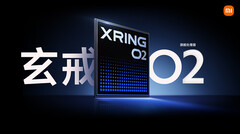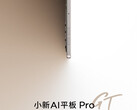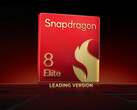Xiaomi is reportedly taking another significant step towards a fully integrated hardware ecosystem. Following the successful development of its propietary XRing O1 chip, there are now increasing indications that work is already underway on the sucessor, the XRing O2. The new chip may play an even more central role in Xiaomi's product strategy, as it will not only be utilized in smartphones, tablets and smartwatches, but possibly also in future vehicles and other product categories.
The relevant information comes from a leak published by well-known and reliable tipster Digital Chat Station. Even though Xiaomi is yet to officially confirm the XRing O2, the SoC has already appeared on a Chinese trademark list. This lends further credence to the speculation and suggests that the development process is already in full swing.
Xiaomi processor with cross-platform applications
Particularly noteworthy is the idea that a single chip design should be flexible enough to be adapted for a wide variety of devices. If this is actually implemented, a unified XRing O2 processor could be installed in a smartphone, a smartwatch and even a car like the Xiaomi SU7 and YU7 in the future – each in specially adapted variants, of course. This would make it much easier for Xiaomi to more closely network different device types on the software side and seamlessly integrate cross-platform services and applications.
Technically, the XRing O2 is said to be based on the 3-nanometer N3E process from TSMC (Taiwan Semiconductor Manufacturing Company). This manufacturing standard represents a further development of the process already used in the XRing O1 in the Xiaomi 15S Pro and the Pad 7 Ultra. Other major manufacturers such as Qualcomm, MediaTek and Apple are also using advanced N3P nodes in their upcoming flagship processors. Following that, the entire industry is expected to gradually transition to even smaller manufacturing processes such as 2-nanometer.
However, access to these cutting-edge manufacturing processes could be more difficult for Xiaomi. This is due to potential export restrictions that could limit access to essential software tools (EDA tools) for developing advanced chips. While this might not necessarily have a negative impact on the performance of the XRing O2, it could impact the platform's long-term competitiveness and sustainability.
Source(s)
Digital Chat Station (Weibo)
TianYanCha via Farido Fanani (X)






























